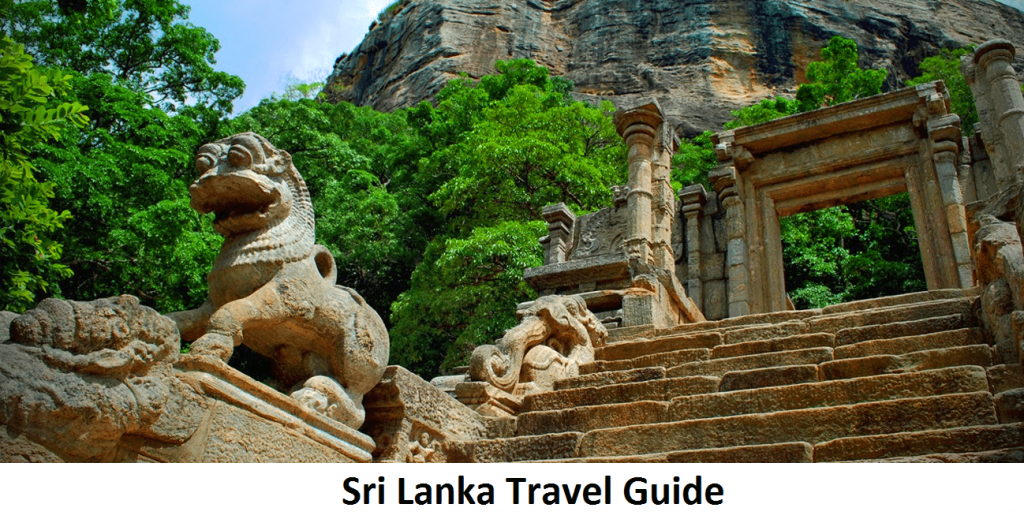This island in the Indian Ocean has as many names as there are peoples living on it. A tear of India and the Blessed Land, Pearls of the East and the Island of Lviv, finally, Ceylon and Sri Lanka – all historians have more than 80 names.

A medley of races on the island was the cause of the appearance of a very complicated tangle of religions. Many holy places in Sri Lanka do not have exact religious “belonging” and are equally revered by representatives of all faiths. Locals adhere to the motto “God is one – providers are different,” probably, therefore, the very elusive sincere “spirituality” comes through here in everything.

21 million inhabitants live in Sri-Lanka. Sinhalese and the Tamils dominate. The overarching religion is Buddhism and most Sinhalese adhere to. What is more, Christianity, Islam, and Hinduism are common for the country. The system of government in Sri Lanka is a semi-presidential republic. In an administrative way, there are nine provinces — Eastern, Western, Northwestern, Northern, Central, North Central, Southern, Uva, Sabaragamuwa.
The main economic sectors are textile production, agriculture and mining of precious jewels. Recently, the tourism industry is gaining momentum. The most sought after holiday destinations in Sri Lanka are the resorts of Wadduwa, Bentota, Beruwella, Hikkaduwa and Kalutara. If to speak about the most developed sport, it is cricket; the Russians find it exotic. The state maintains a dynamic foreign policy; Sri Lanka is a member of the well-known multilateral institution – the UN (United Nations), the IMF (International Monetary Fund), the ADB (Asian Development Bank).
Muslims believe that the Garden of Eden in Sri-Lanka was located, and they are not so far from the truth: local beaches, azure waves and multi-colored coral reefs are quite suitable for this “heavenly place”. In addition, along with the bright cuisine and colorful sights, Ceylon is guaranteed to not leave anyone indifferent.
The inhabitants of Sri Lanka are deeply religious people mostly, and Buddhist or Hindu rituals here are often intertwined with ancient pagan customs. In order not to be in an uncomfortable situation, it is useful to remember some rules:
- Entering a temple, what you need to do is to take your shoes and a hat (if any) off at the entrance to the temple. Cut-offs and an exposed T-shirt are not suitable outfits for visiting the holy place. If your clothes seem too frank to the attendant at the entrance, you will be given a sarong cloak.
- You cannot touch the monks, and women pass them something from hand to hand.
- In public establishments, it is better not to sit tailor-fashion so that the sole of your shoe is facing someone around: for Buddhists, this is considered disrespectful.
- Be careful with gestures: the equivalent of our “middle finger” here is meant to be the index finger, sticking out of the fist turned up by the palm of your hand (approximately, as we usually show with the gesture of “one”).
The largest city is Colombo is famous for its unique architectural and cultural landmarks. Among them, it is worth noting the Fort, the temple Gangarama, Independence Hall and others. Successfully plan their visit will help free guide to Colombo from Arrivo.
The guide provides detailed information about the sights and entertainment of the city. There you can find descriptions of local restaurants and cafes, as well as the most popular dishes. The famous Galle Face Green promenade, the main place for walking in the city, is mentioned separately. In the evenings, locals and tourists gather there. The guide also tells about the entertainment in Colombo. In particular, this is a quiet visit to local museums and theaters, and lush Buddhist holidays NavamPerahera and EsalaPerahera. With the help of the Arrivo guidebook, it is easy to find the desired object and find out what interesting things can be seen within the city.
Road transport is widespread in Sri-Lanka. Costly bus service connects most country cities and towns. Currently, the majority of the roads (especially in the tourist part of the island) have undergone and are undergoing massive reconstruction with the participation of humanitarian and technical help from the UN and a number of non-governmental organizations, and their condition is very good generally.
Besides that road transport, several branches of the railway service, built during the British Empire times, are also preserved. The center of the rail system is Colombo and its station Colombo Fort. So, along with the southern coast through Galle to Matara goes the Beach Line, to the mountains to Badulla through Nuwara Eliya and Kandy – a mountain branch. Across the island, diagonally east to Trincomalee and north to Vavuniya are the eastern and northern branches, respectively. The trains are divided into classes (1, 2 and 3), due to the island`s small size, the main types of cars are sessile, but there are a few slow night trains with berths.
About the author:
Melisa Marzett has travelled to Sri-Lanka and some others countries but it is needless to say that namely Sri-Lanka left the brightest trace in her memory. Melisa is working for Professional Custom Sky Paper Writing Services as a freelancer at the moment, which makes it possible to work and travel and this is good news.